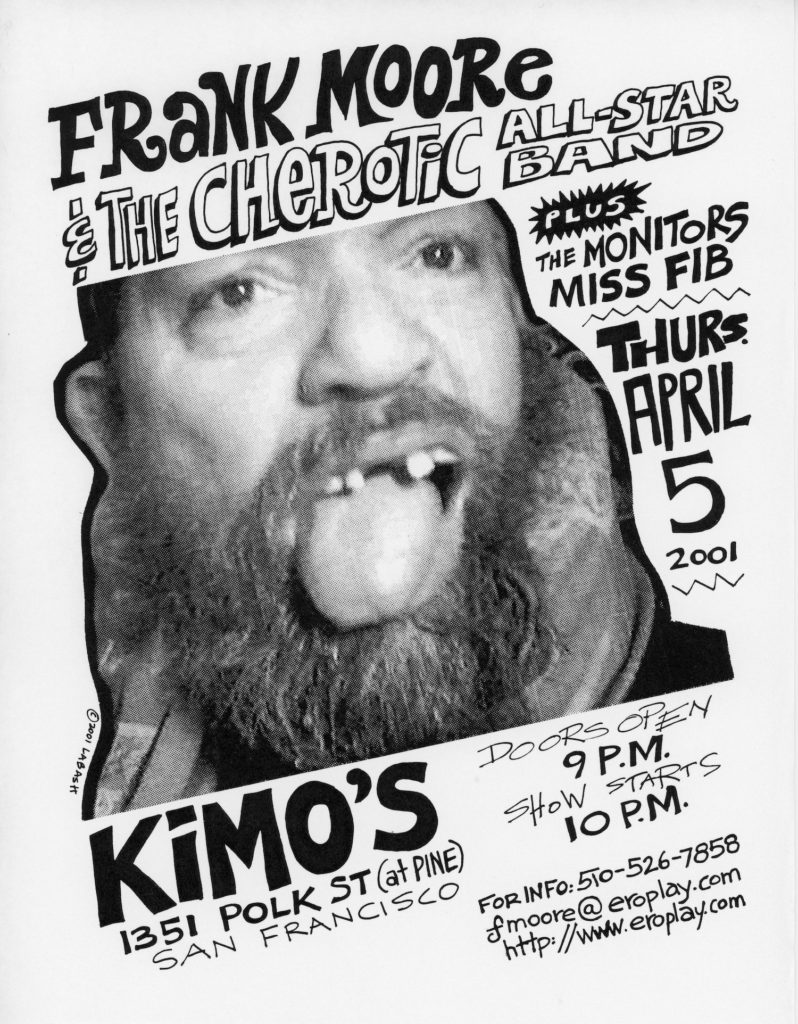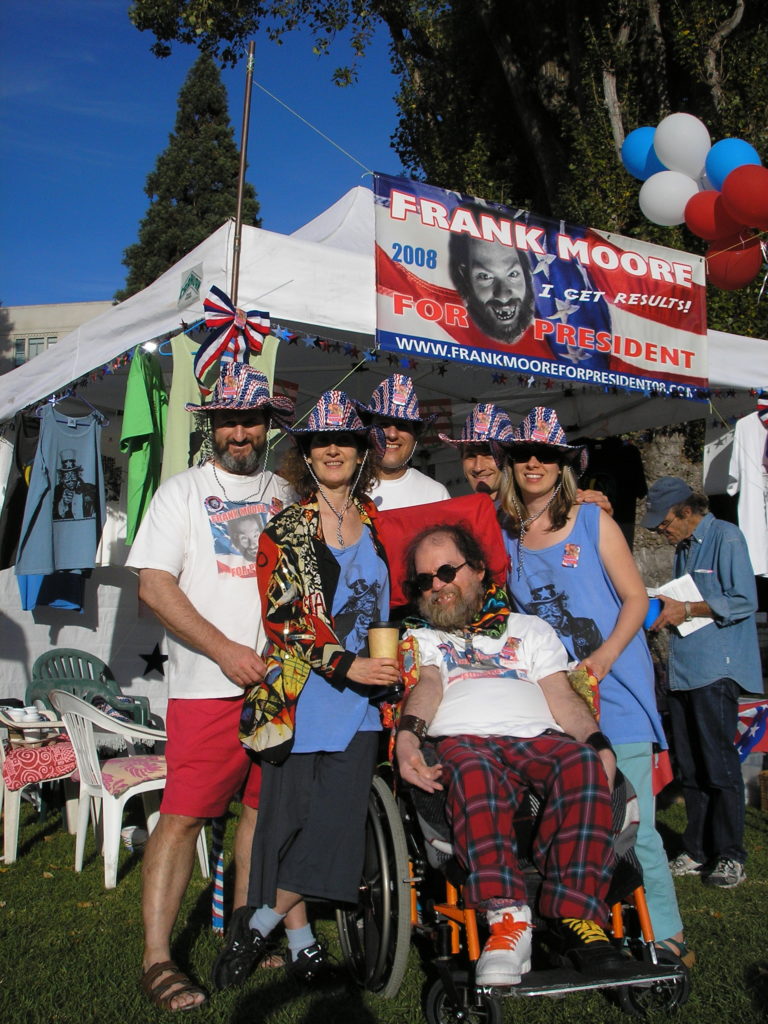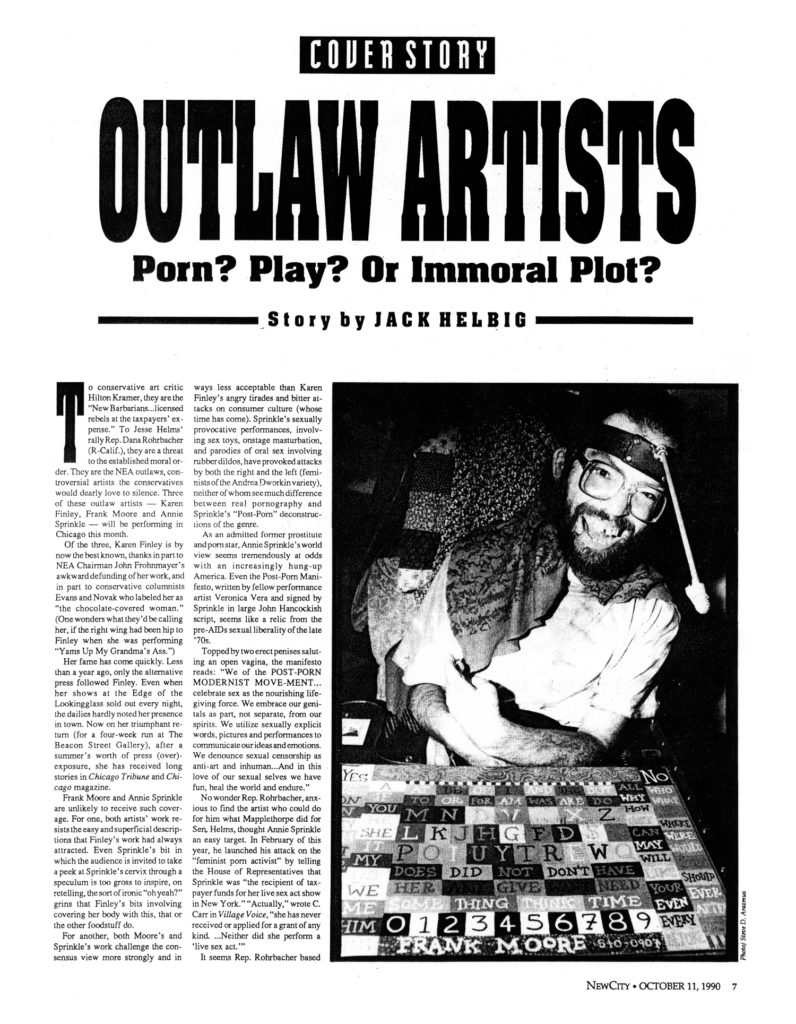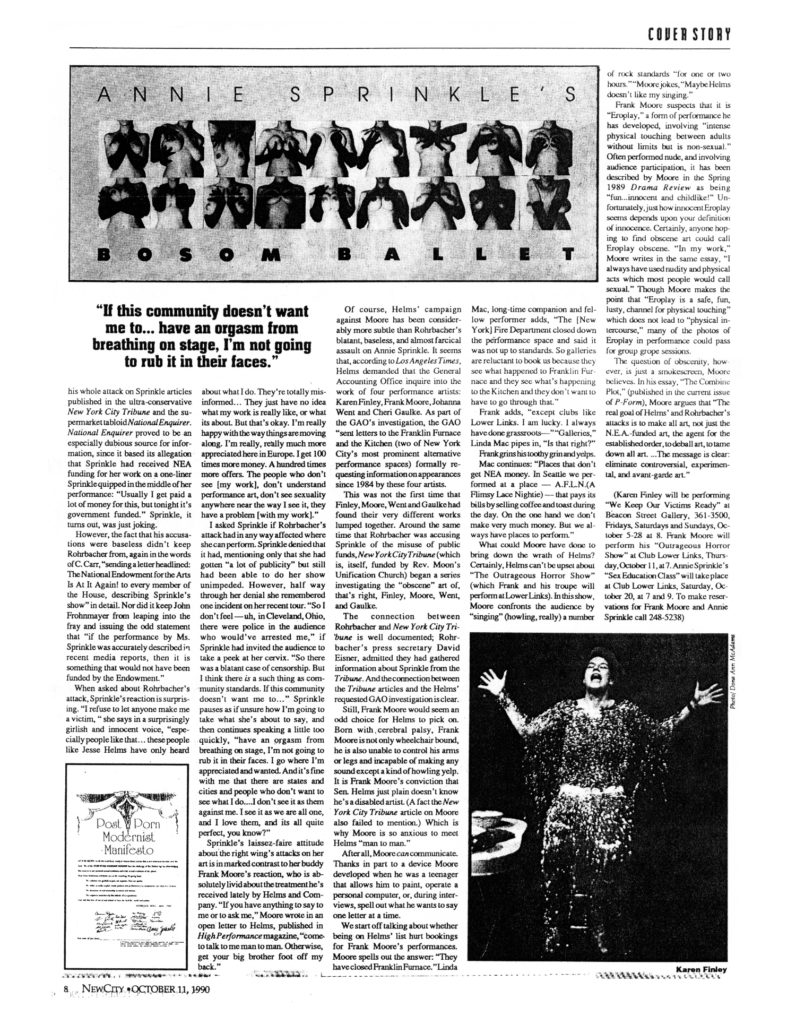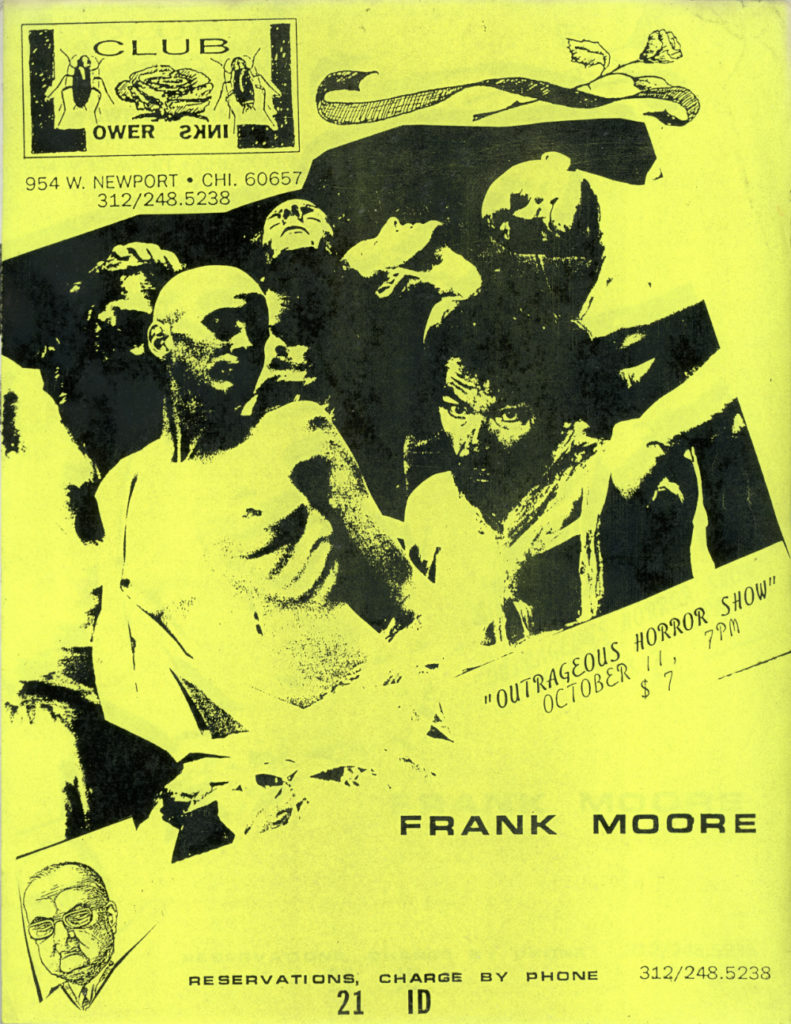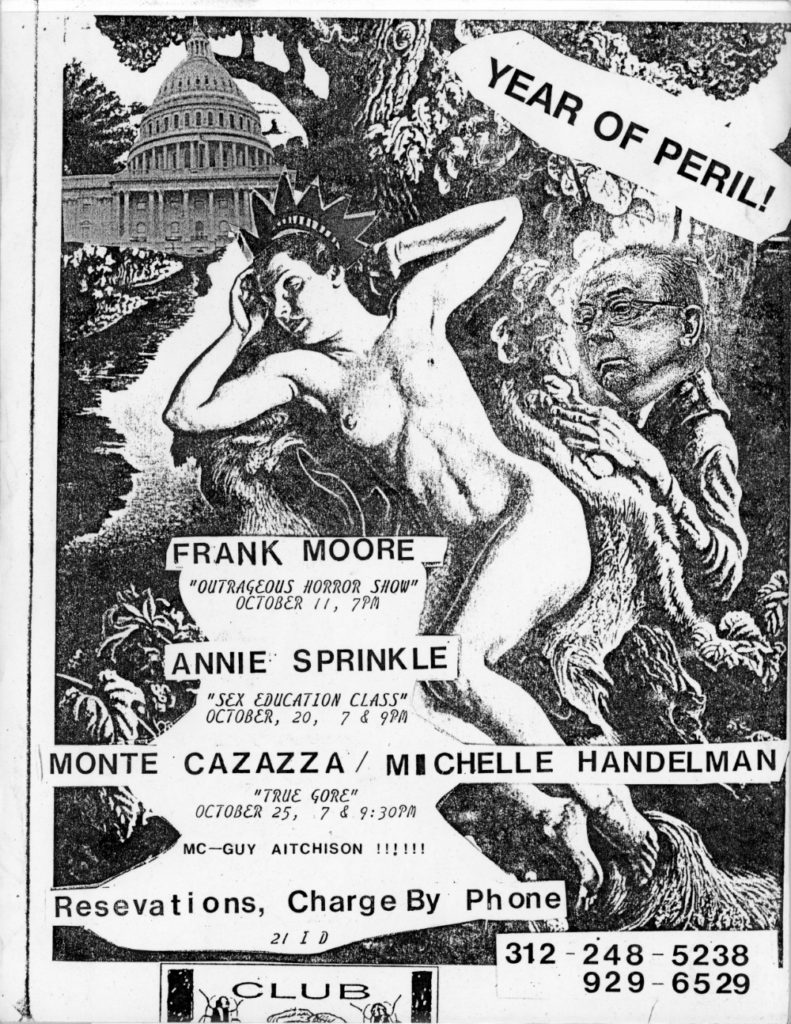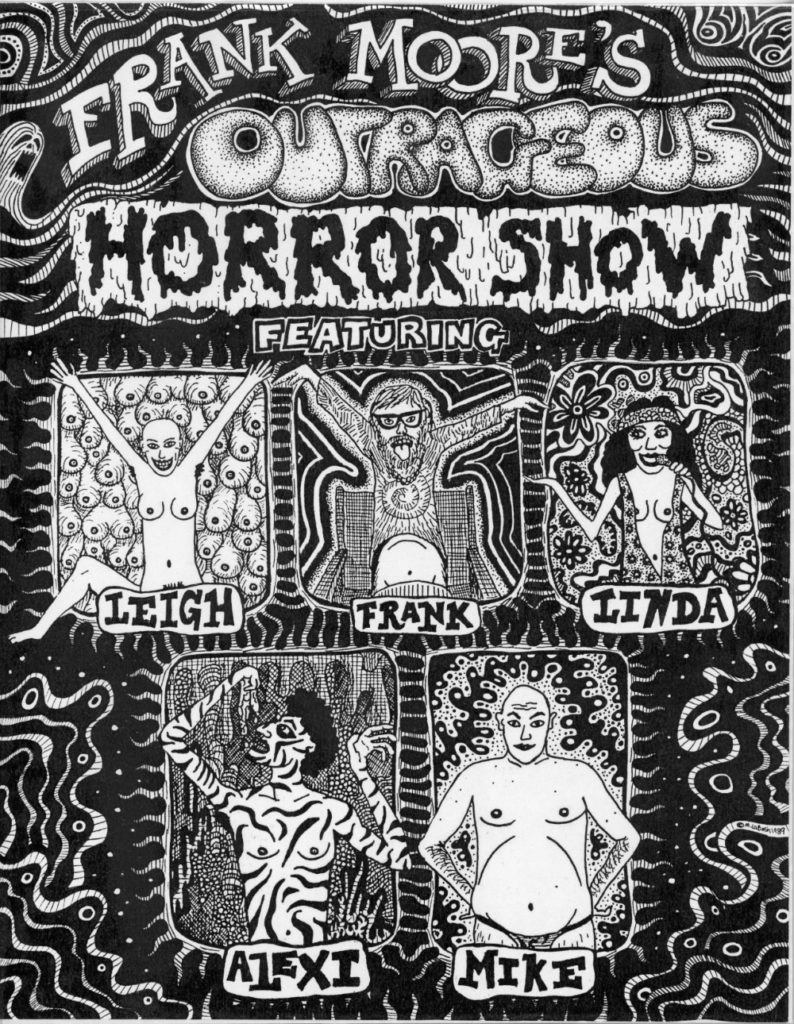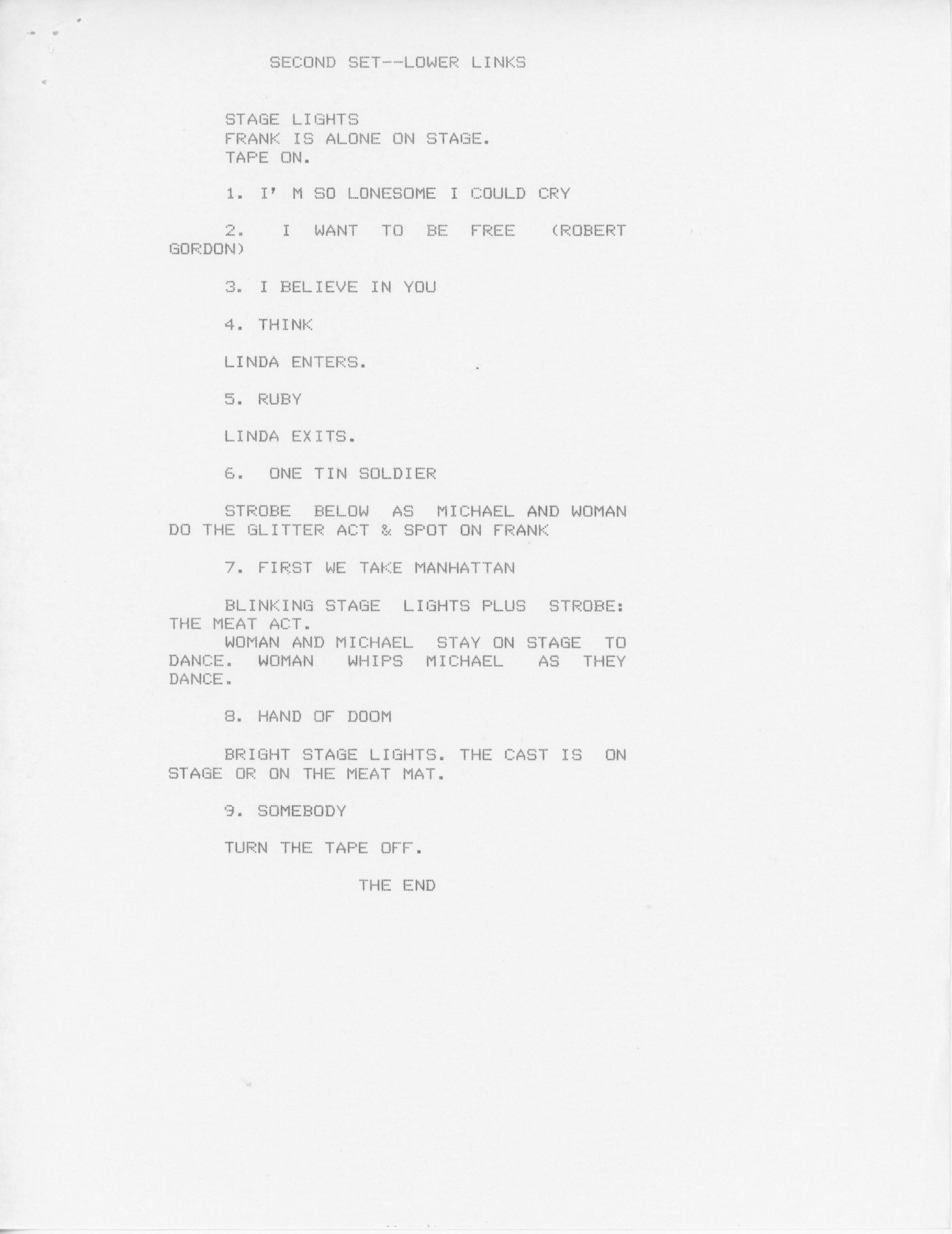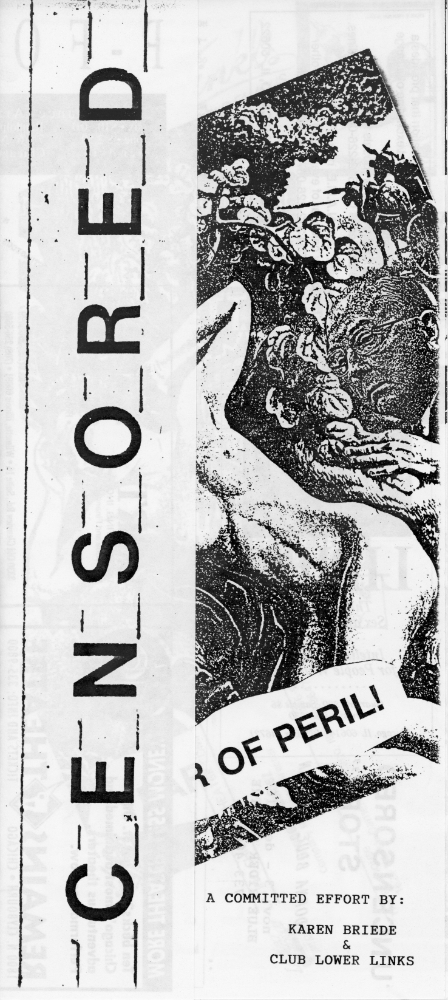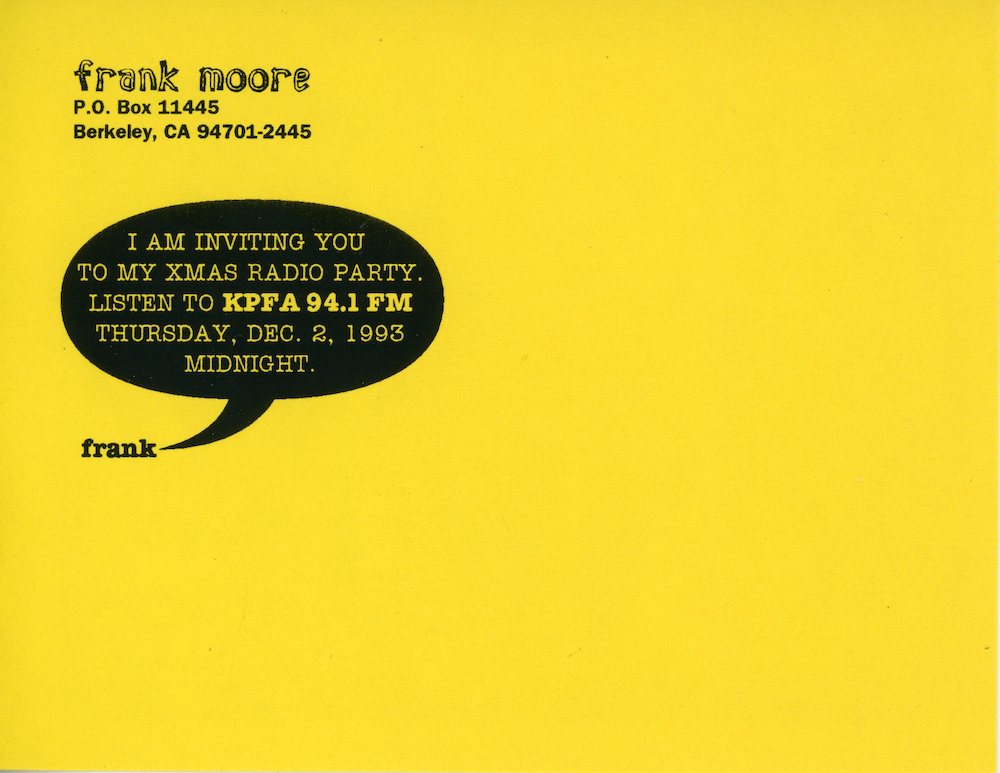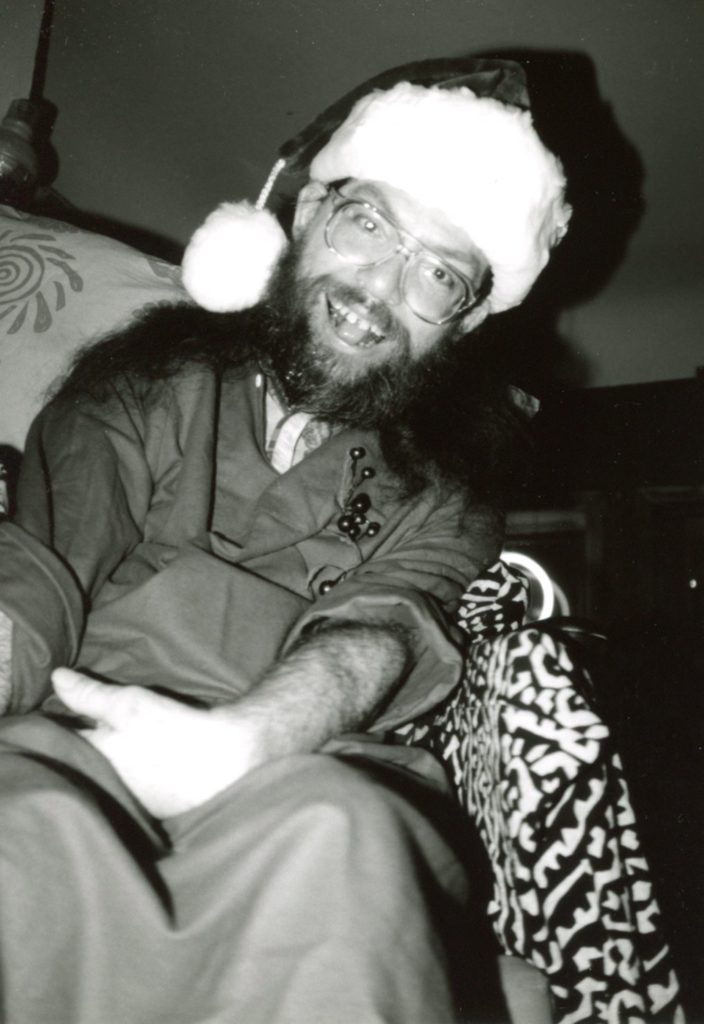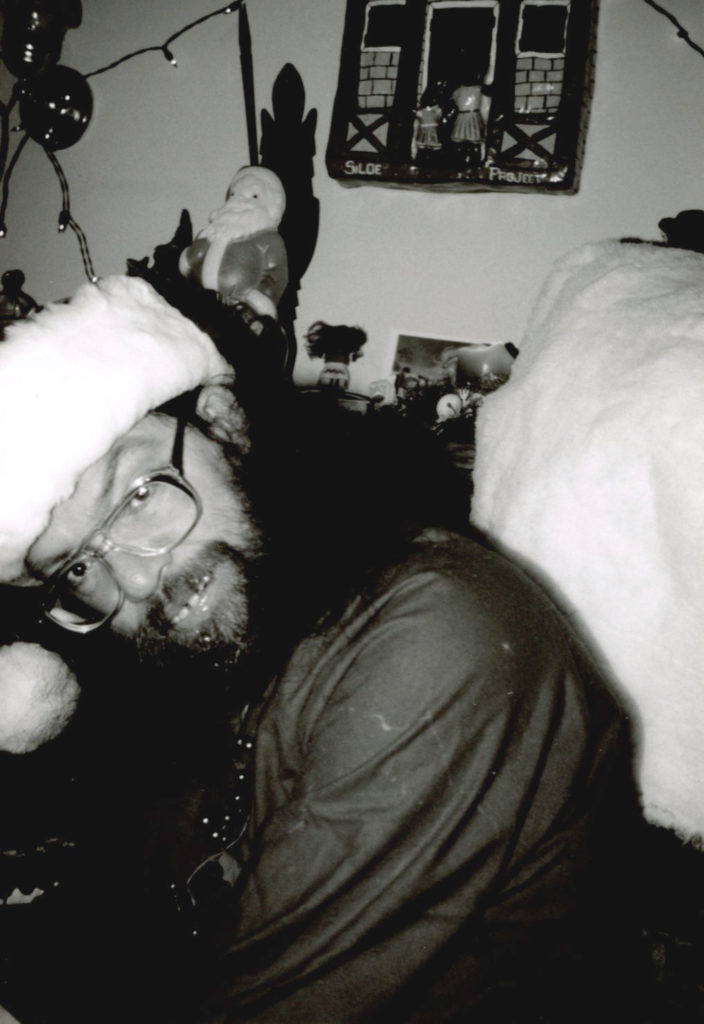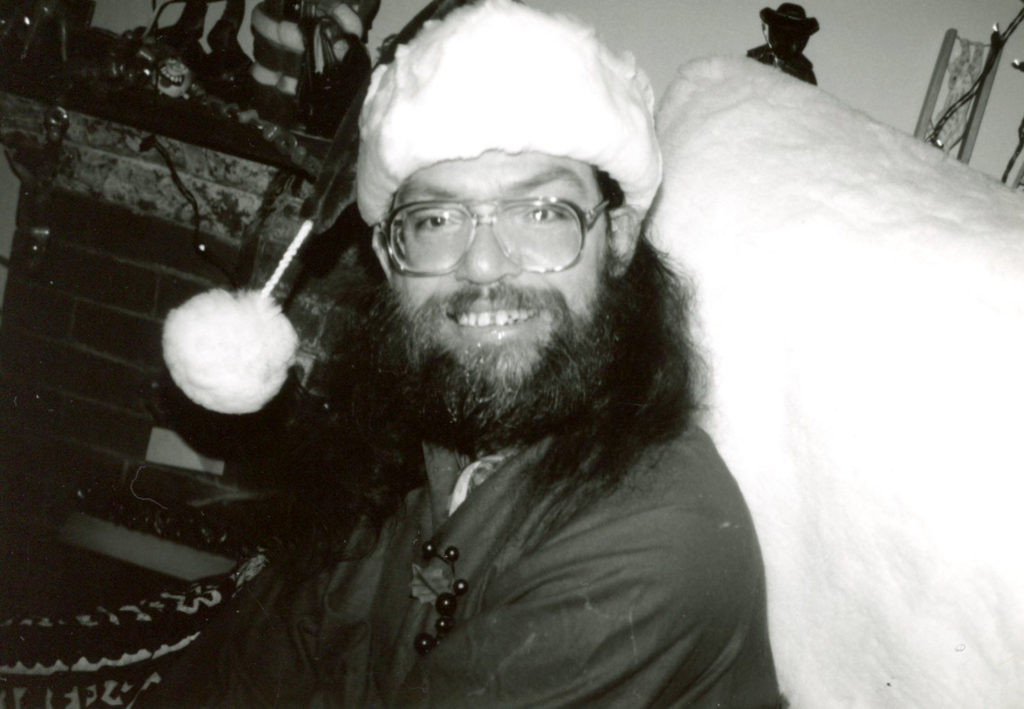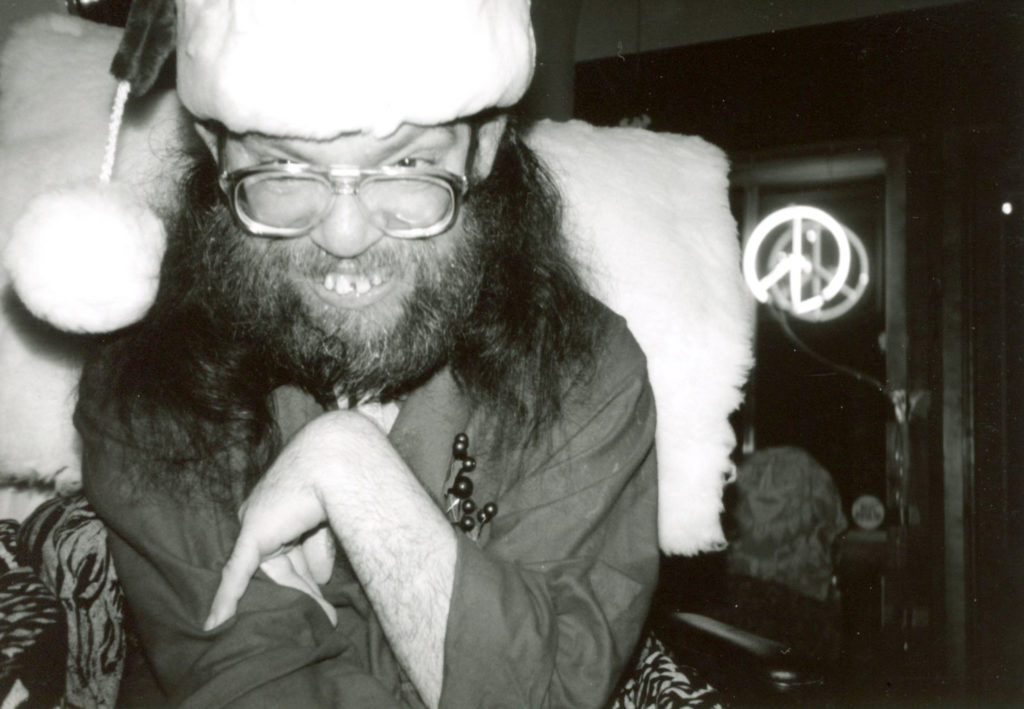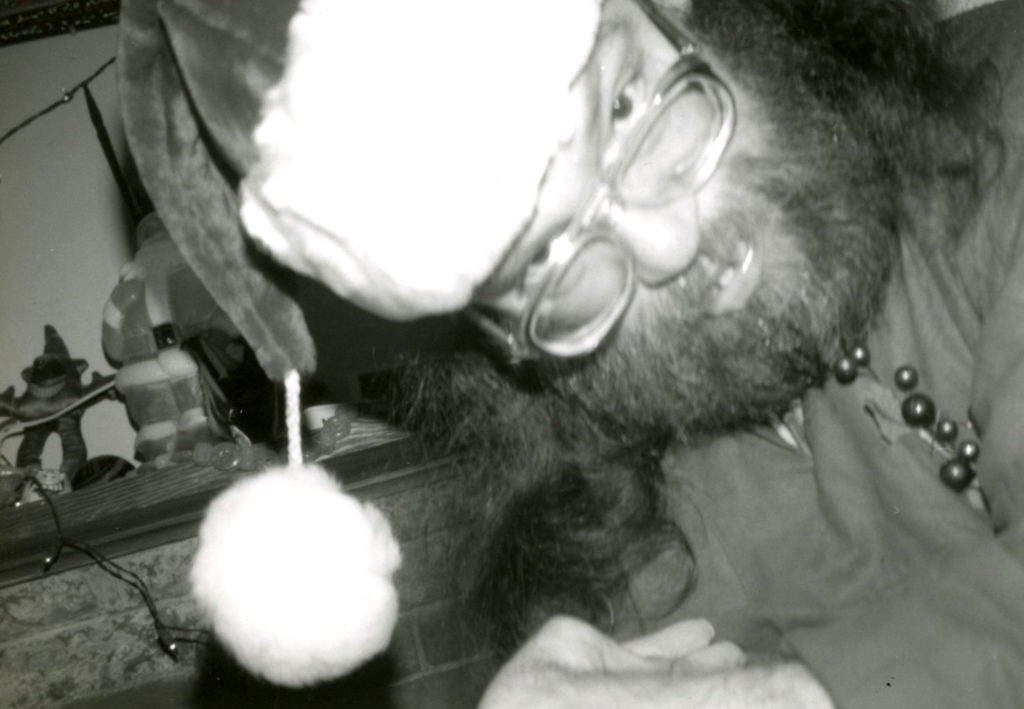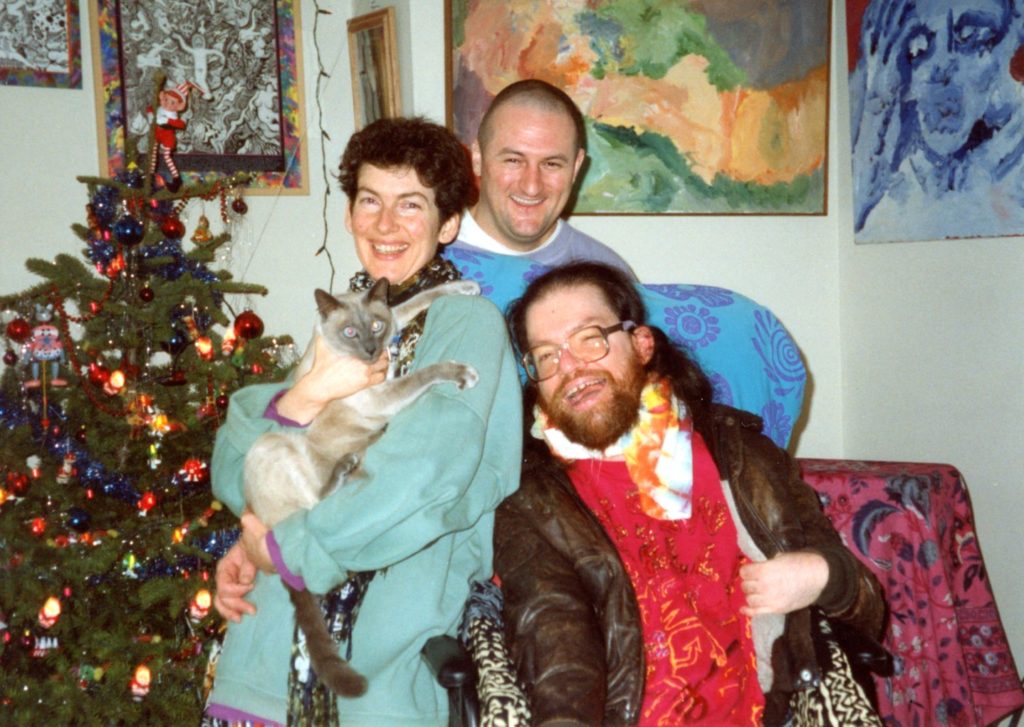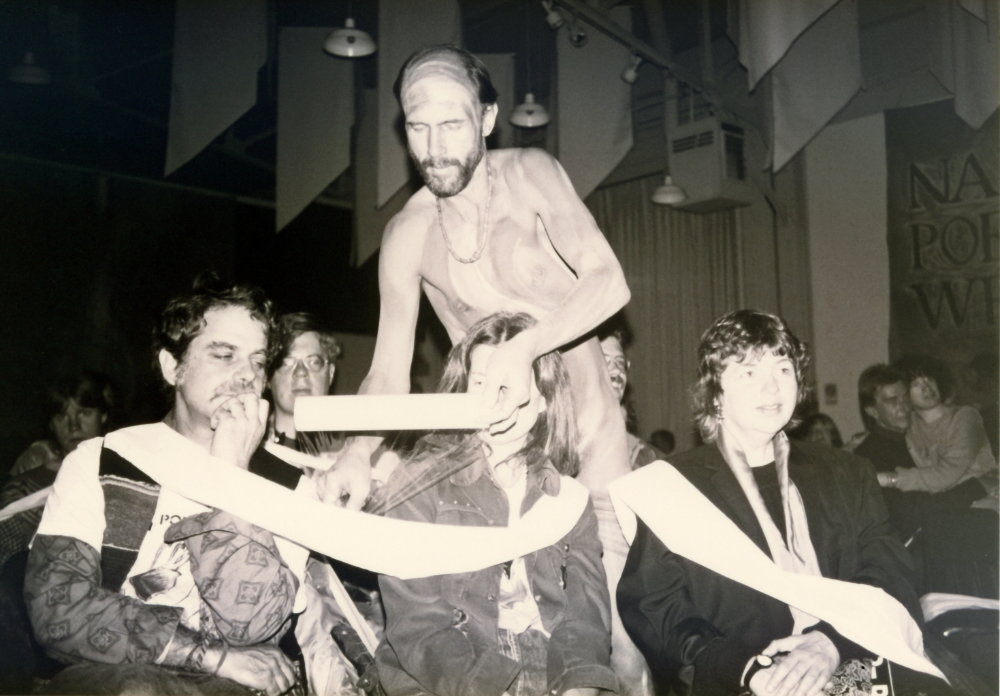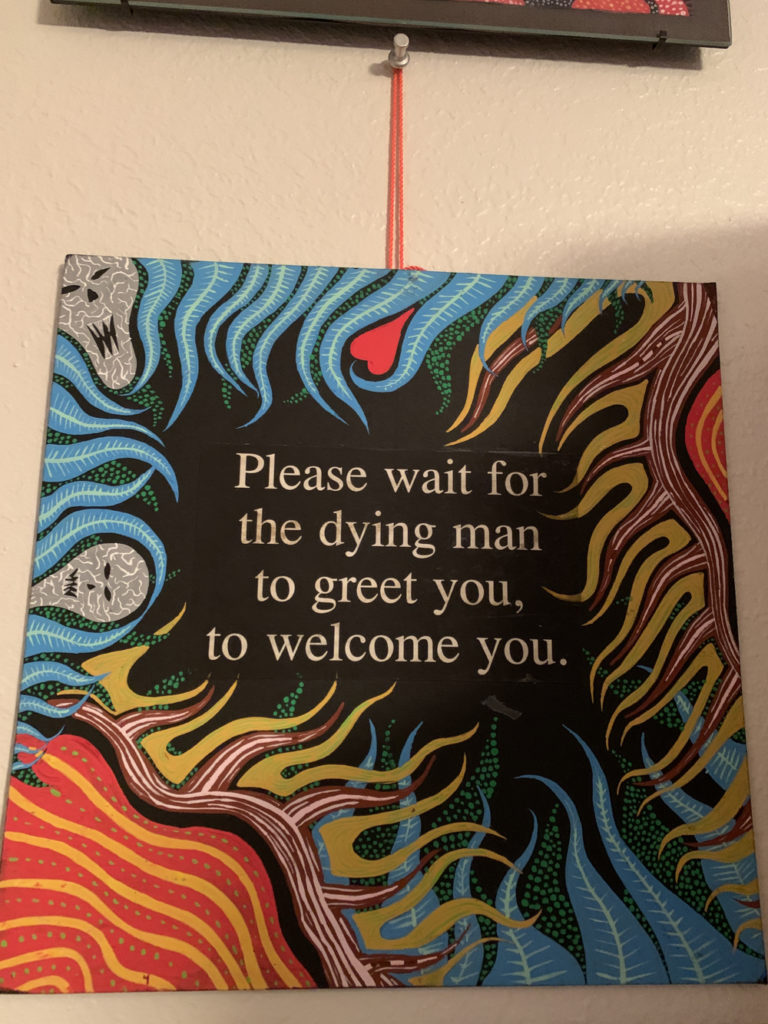Elections in the US are approaching fast. Although both Hillary and Barack have begged us for an interview – we refused. We’re opting for so called “third-party candidates”, people unaffiliated with neither republicans nor liberals. Are you a US citizen? Love party and weed? Vote for Frank Moore!
Thanks to Tomek Von Schachtmayer for the translation from Polish to English.
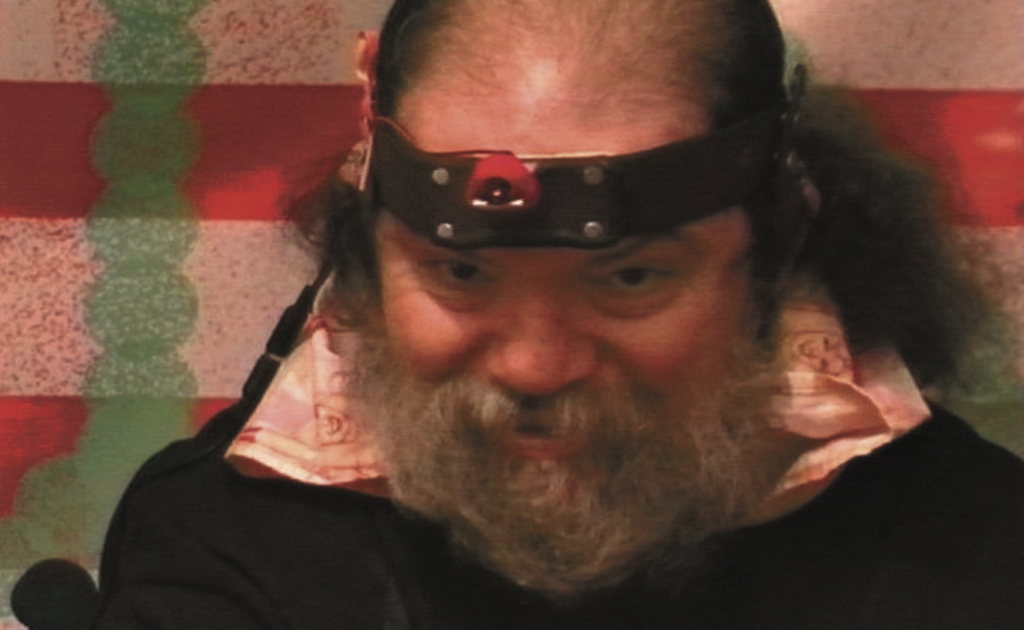
Section – Counterintelligence
MK: Lets assume I’m an American. Why would I cast my vote just for you?
FM: Because none of the candidates are sincere, they don’t want to introduce any necessary changes, and realistically support societal progress. This is just what my task is going to be. People don’t see me as a performer bound to a wheelchair, but someone who shares their dreams and speaks about things that in fact concern life. They realize that by pulling forces/efforts together we can overcome fear and isolation, abandon corporate shackles and ensure everyone’s medical care, education, decent income, reintroduce rights and liberties and bring the army back home. We have to be aware of these possibilities. Don’t waste your vote on someone who doesn’t understand your dreams, because he or she is surely not going to help you realize them.
Vote for Frank Moore!
MK: So your participation in the presidential election is not solely another performance.
FM: Every election campaign is a performance. Except it’s quite serious. My campaign started with a T-shirt. Two years ago, Michael LaBash, one of five members of our commune gave me a T that said “Frank Moore for President” as a X-mas present. I have sported it a few times, people got interested then began to ask me about my election program. It just goes to show that it’s impossible to tell which direction an art project would evolve. I don’t perform to tell stories, paint pictures, strip in public or even more so to make some dough. It’s simply the best way to create a community! In the 80’s and 90’s by using a variety of techniques I would take the audiences of my long ritual shows onto a virtual island of ‘Lila’. Out there everyone felt like a member of a family in which isolation, fear and competition did not exist. Such experience made people realize that it is possible to create an analogical community in real world. It gave hope that is associated with changes and a rise of expectations. And my presidential campaign reaches much further than those hours long rituals.
MK: Right on. You are considered as a behavioral scandalist, a shocking performer famous for parties that astonish with nudity and last 48 hours. Even America considering herself super-liberal is not ready for a president like you.
FM: We’ll see. Today’s Americans are much more open-minded than their so called leaders. My program and ideas are the clearest points in this electoral performance. People are focused on them exclusively, nothing else matters to them. Anyway, most people who come to see my ritualistic performance are relaxed rather than shocked.
MK: You say that you are a “political virgin”. History of presidential elections shows that independent newbies don’t count in the game as far as winning. Especially persons like you who cut themselves off of this whole “political world”.
FM: Do you mean that I’m not a politician, a person addicted to power? That’s right. I’ve never tried to run for office – maybe with one exception of a small episode in college. Nevertheless, I’ve always been engaged in politics in a wider, social context. Back then I’ve collaborated with independent press. History shows that for “third party candidates” the goal is not to win. Basically the electoral system is rigged to prevent us from winning. Our task is to instill new ideas, cause ferment, instigate change. In this context my presidential campaign is super effective. On the other hand… It’d be cool to defeat those suckers!
MK: You’ve been living with five people for the last 40 years. Hippie commune? It used to be cool ages ago. You will rather not impress your fellow citizens with this.
FM: Cohabitation offers various possibilities. Living in a commune is cheaper. Besides, it’s written into human history. People have been living together for millennia! As a president I will support building small, well connected neighborhoods. We’ll be walking or bicycling to work, school, or to go shopping. This way we’ll get rid of traffic jams, limit greenhouse gas emissions, stress and feelings of alienation. Everyone will be granted a housing.
MK: So back to the roots then. You’ve been excited about socialism during college, today you often use terms like “anticorporate”, “anticapitalist”. Do you think that a lack of campaign funds is your asset?
FM: No sponsors means no compromise. I set imagination in motion, improvise. I keep in mind the scale and the possibilities and do not give empty promises. All that put together gives me absolute freedom!
MK: One of your propositions is legalizing and taxing the sale of drugs.
FM: War against drugs has become a part in a bigger war against people, especially people of color and leftists. One in a hundred Americans is in prison. Marijuana should be available, to adults only. As a further matter, taxing this most demanded crop in the U.S. will bring measurable benefits. This idea really makes sense.
MK: Your propaganda megaphone is your website Luver.com. How much does it cost to maintain a 24 hour working internet radio?
FM: Love Underground Visionary Revolution was founded 9 years ago. It’s an anti-corporate, anti-capitalist revolution! Uncensored, working according to DIY philosophy, a non-commercial institution. In the beginning it cost us $99 per month, now its up to $700. We don’t have much support and we cover most of the cost ourselves. That’s what underground is about!
MK: Readers of “AKTIVIST” magazine are interested in metropolitan life and culture. What will you offer such people as president?
FM: I often perform in illegal punk clubs, Japanese restaurants and at other interesting gatherings. I’m a musician, poet, TV-show personality, I also run my own club. I know how to have a good time – I’ll send unbelievers to www.eroplay.com. Club culture, raves, street festivals, musicians… since the mid 80’s all these things have been gradually losing importance. As a president I will revive nightlife and bring it back to its old splendor. Again, people will have places to meet, talk and party!
MK: In your dictionary there is no term for “impossible”. If you don’t succeed in the presidential election this time around, are you going to run again in four years?
FM: Easy, I’ve got a plan and I carry it out step by step so be alert!
Note:
Frank Moore – performer, poet, musician, painter. He was born with cerebral palsy – he doesn’t speak and uses a wheelchair. He can communicate in a somewhat similar way to the main character in “The Diving Bell and the Butterfly” movie. In the early 90’s he was a target of an influential senator Jesse Helms who torpedoed efforts of the National Foundation for the Arts established by Frank Moore which, according to the politician, promoted “obscene” ideas. In one of the recent interviews Frank was asked a question about the difference between him and his rival candidates in the presidential election, he answered: “Which other candidate will be your homeboy?”.
See the original layout in Polish here:
https://www.frankmooreforpresident08.com/pdfs/aktivist-printversion.pdf

